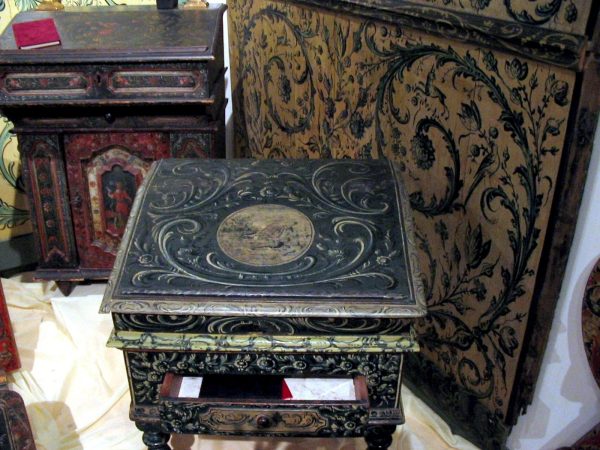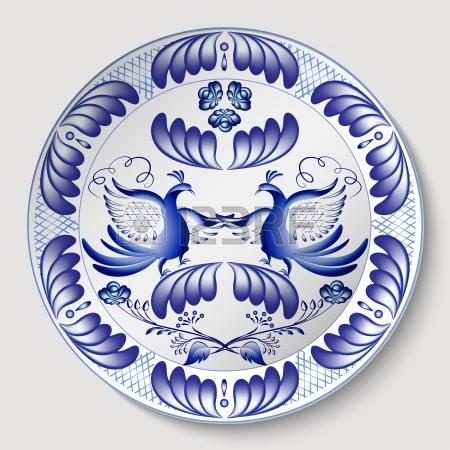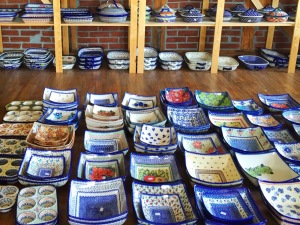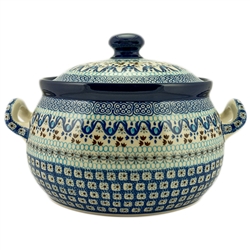
On one of my first trips to Europe, I visited Delft, a small town renowned for its art and painting – traditions that have been preserved since well before the 17th Century.

Delft is famous as the birthplace of the talented master painter, Vermeer, and home to the production of the exquisite ‘Delft Blue’ earthenware.
The 2003 movie, The Girl with The Pearl Earring, was set in the town of Delft and based on a novel, of the same name, by Tracy Chevalier. There are reminders everywhere in Delft.
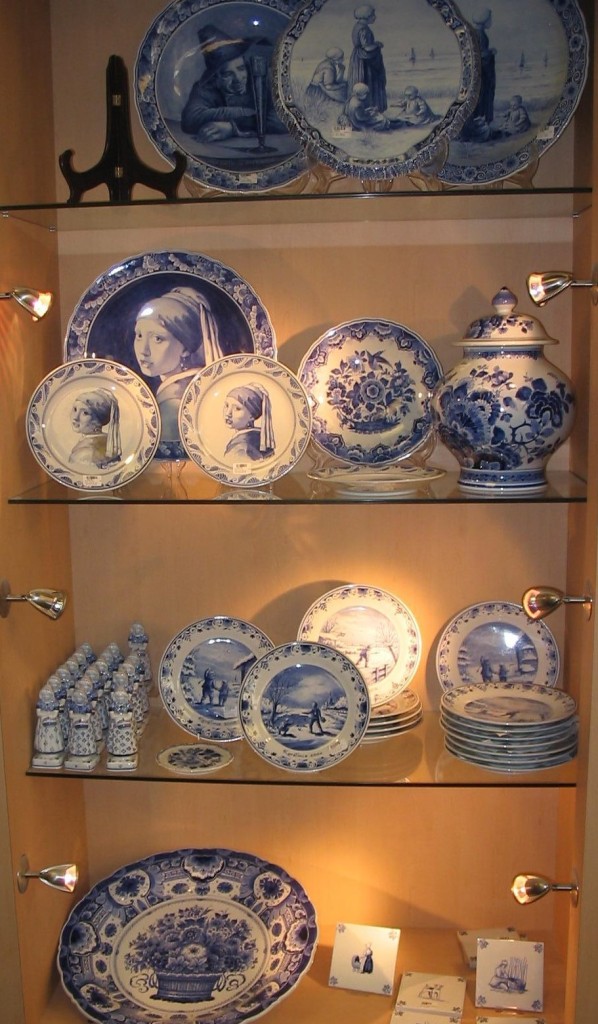
At the Delft factory, the Koninklijke Porceleyne Fles, I took the option of an English-speaking tour. This establishment dates back to 1653, (the Dutch Golden Age). The translations in English were noticeably shorter than the German or Dutch versions, so I can only assume words took longer to say in a different language!
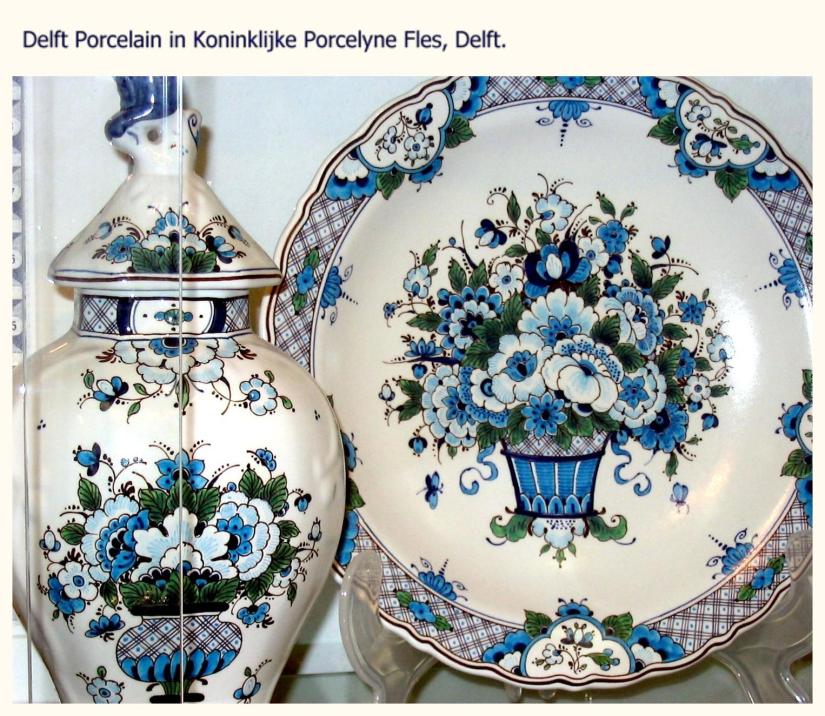
All genuine articles of Delftware have the insignia you see on the header image, on the reverse side of the article. If it is missing, it won’t be a genuine Delft piece, but a cheap imitation – of which there are many.
Not only did I see the production process of a huge variety of magnificent Delft Blue antiques, (even in the ladies toilets where there is a massive mural in painted tiles), but I got to watch the Delft artists at work, painting new earthenware plates and vases.
Painting Delftware
It was interesting to note that prior to painting, the Delft artist traces the designated pattern onto the unfired ?Greenware in carbon, using strategically placed dots, made through holes in the tracing. The designs are then painted with black paint, and the firing process burns off the carbon dots and changes the black paint to the familiar and beautiful Delft blue colour.
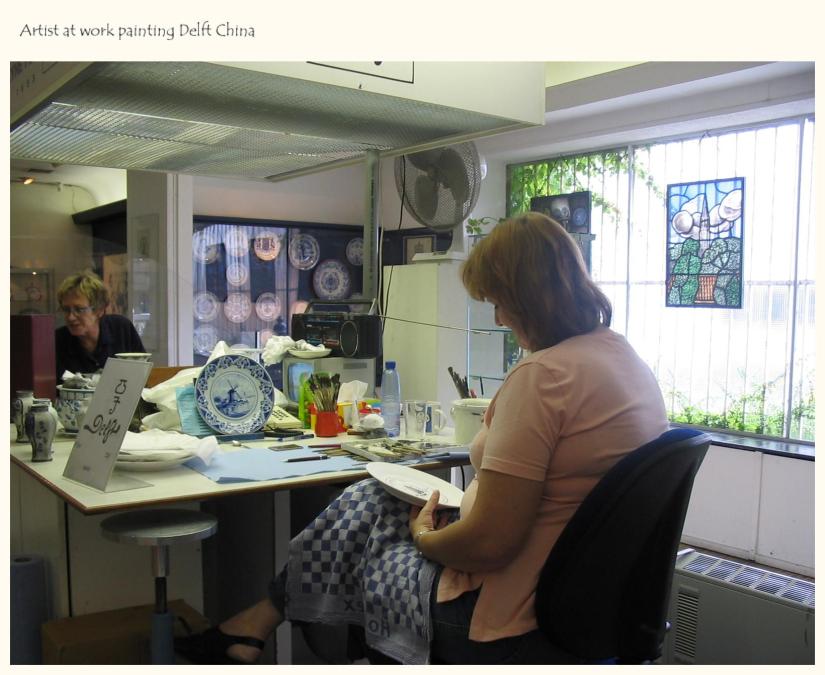
The artists who demonstrate Delft painting, in the public viewing room, only painted for 30 minutes at a time before swapping with other artists, to a private work area. Painting the lines accurately and precisely requires intense concentration. It’s difficult to maintain that level of concentration for any length of time, especially when you have interested tourists gawking at you.
Buying a Piece of Delftware
Heads up: If you’re looking to purchase a genuine Delft hand-painted souvenir, take plenty of money, as it’s very expensive.
There are various colours available too: even green!
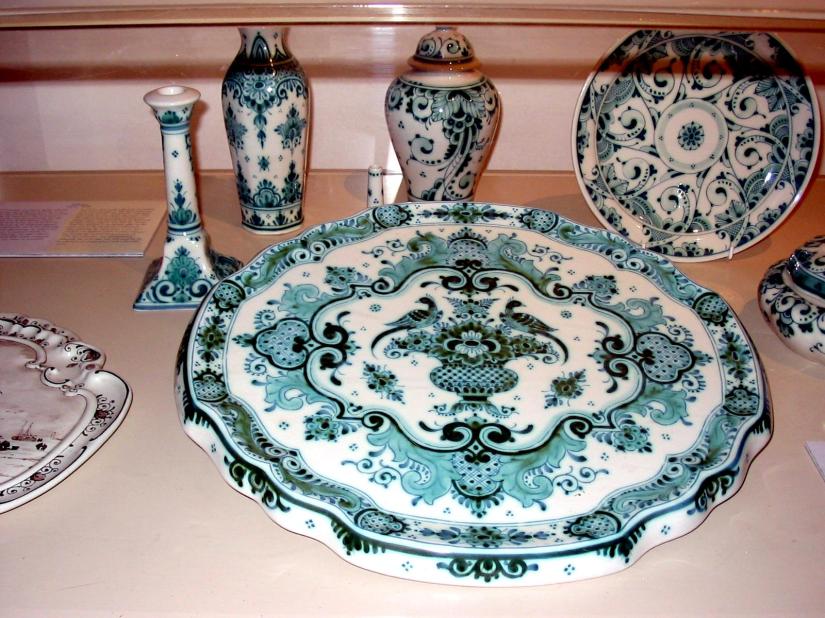
The Netherlands’ vast legacy of decoration, both on earthenware and wooden art is a wonderful inspiration to contemporary artists.
Connections between Traditional Folk Art Styles
It is also noticeable to delve a little further back into history and examine the influences that facilitated the development of the many variants of Dutch folk art.
One rustic folk art style is called Hindelooper and was greatly influenced by the Norwegian decorative painting styles called Rosemaling.
Why?
Dutch Traders borrowed ideas they had seen on their travels and in turn, these new ideas and influences were absorbed back into parochial Dutch culture and art.
One example is the northern provinces of The Netherlands, where Frisian maritime villages traded far more with other Hanseatic trading towns, such as Bergen in Norway than their own countrymen in Amsterdam, resulting in the integration of the Scandinavian dialects and art concepts into their own culture.
